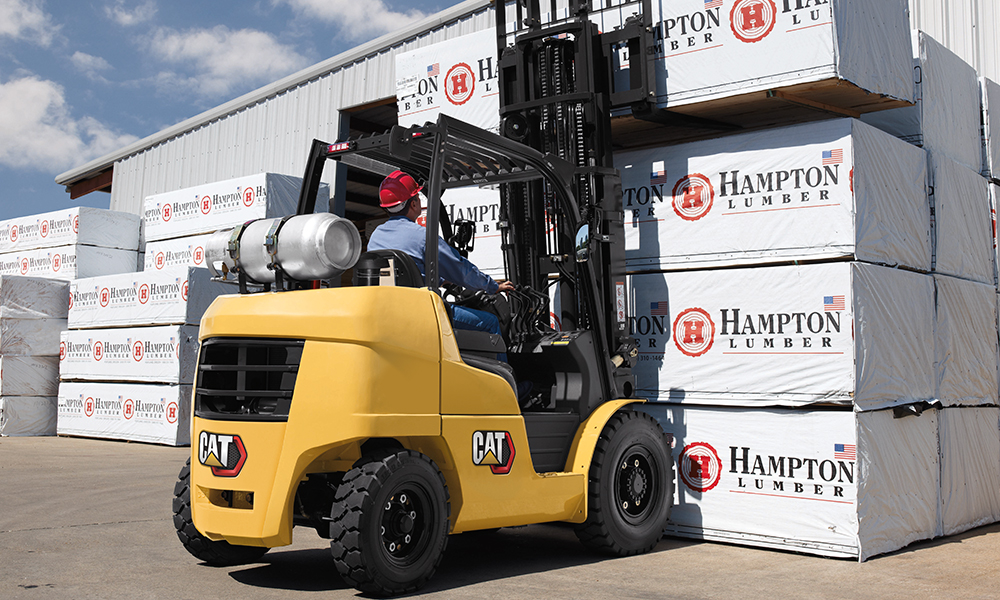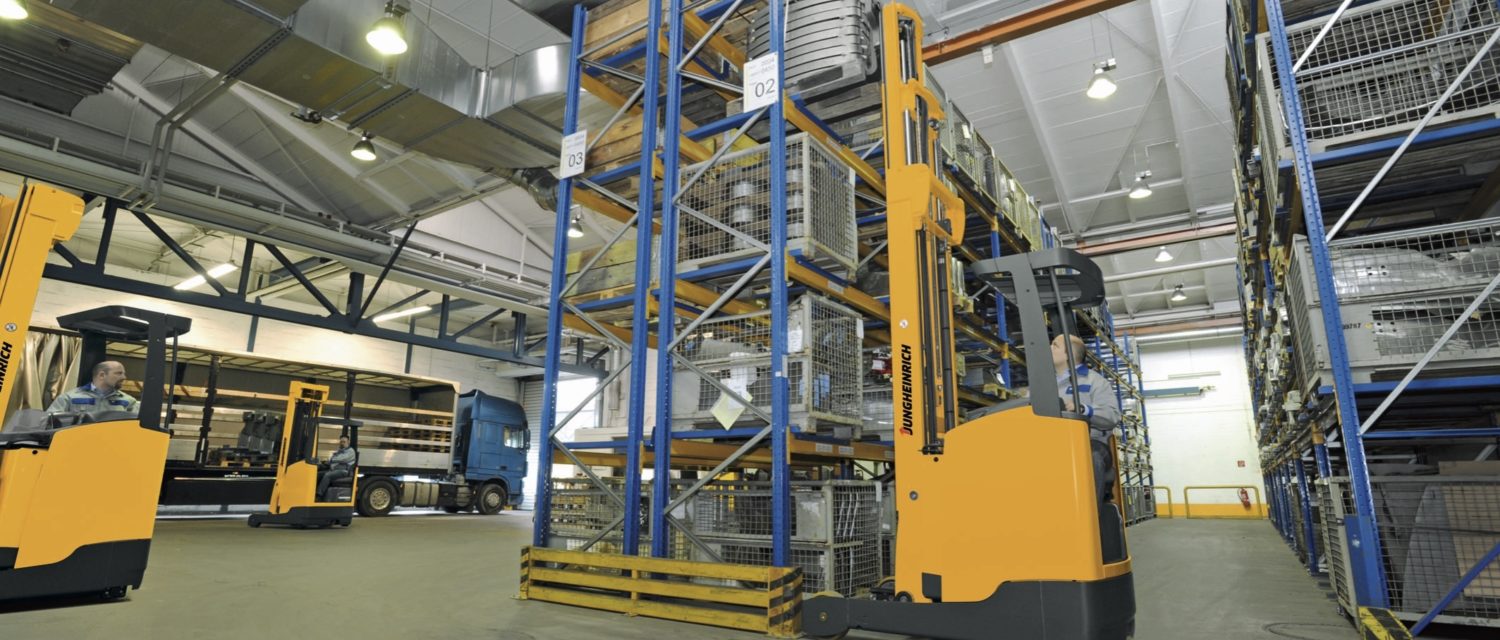Five Reasons to Lease vs Buy Forklifts and Material Handling Equipment

Let’s face it. Material handling equipment is really expensive. There are plenty of times when you can justify purchasing that new forklift, but there are also times when leasing your material handling and distribution center warehouse equipment will impact the bottom line in a more positive way. How do you know when leasing vs buying material handling equipment is the right choice? Let’s break that down into five situations where leasing comes out on top.
1. Seasonal Work or a One-Off
Some material handling and DC warehouse companies find their business ebbing and flowing in time with the seasons. Let’s say you supply lawn maintenance tools and materials. You’d likely see an uptick in product being moved in and out during the warmer months. Likewise, if you work in the construction industry. Or what about during the colder months? Perhaps your business involves a lot of holiday products. People may be ordering decorations and toys at an increased rate during these months.
For companies that tend to be busier at certain times of the year, hiring that additional labor in the form of leased material handling equipment just makes sense. Why would you commit the immense financial layout for a piece of equipment that might be sitting around unused for part of the year?
Another example of a good reason to think about leasing is if your company is in the construction business – or any other industry that depends on working projects. Having won a bid for a new project that is going to call for a piece of equipment you don’t own means you will need to acquire that material handling equipment before the job starts. Will you buy it or rent it? If you foresee winning many more bids that will call for this specific type of material handling equipment, by all means look at buying. If, however, you are not sure if this job is a one-time thing, leasing probably makes more sense.
At any rate, in both of these circumstances, leasing a piece of material handling equipment buys you some time to decide if you need to make a permanent addition to your material handling fleet.
2. Allocating Funds
If your company is an established, long-term business, this may or may not apply to you. For companies that are just hanging out the shingle, however, deciding where to spend their initial funds/capital is of major importance. Too much here or too much there leaves some aspect of the rollout underfunded. Most good business people will advise having a solid plan for where every penny will be spent during those early days – and after. It’s a path that will be well trodden before the business lands on solid ground.
So, do you spend money on material handling equipment or advertising? How about renting or buying the space you need vs buying your equipment? You have a vision for what your business will be, but sometimes those initial plans can get turned on their heads by opportunities that pop up. It may turn out that you need a different piece of material handling equipment more! These are the times when leasing your equipment might make more sense. Allocating your existing funds in the early days wisely can make or break a foundling material handling company. Leasing until the dust has settled could be one of your best early decisions.
3. Kick the Tires
Who doesn’t like a shiny new piece of equipment? It’s like that new car smell. When you buy a new material handling or DC warehouse forklift, you aren’t just getting something that nobody else has had the chance to mess up, you are getting all the latest bells and whistles. Granted, you may not especially need all of those bells and whistles, but it’s pretty cool to have them.
Leasing the latest in technological and innovative advances for forklifts gives you a chance to take it for an extended test drive in your real-life material handling or DC warehouse application. Some of the items you’ll want to check include:
How do your operators like it? After all, they are the ones who will be using it every day for eight hours. Is it fairly comfortable? Is it easy to operate and understand?
Does the battery last long enough to get some real work done? Alternatively, how is the fuel usage?
Most importantly, does it do the job it’s been hired to do?
If you’ve got your eye on that new piece of material handling or DC warehouse equipment, you can give yourself a leg up and eliminate the chance of a nasty surprise by leasing one just like it for a little while.
4. Maintenance/Taxes/Insurance
There’s a bundle of reasons why renting makes more sense when we talk about the hidden costs of purchasing material handling or DC warehouse equipment. Things like maintenance, taxes, insurance and more are all part of equipment operating costs that you won’t have to deal with when you lease. Let’s take a closer look.
Maintenance and repair
In most cases, when you rent or lease a piece of material handling equipment, your rental is covered by the dealer’s maintenance and repair clause. After all, even though you are presently using it, the equipment is still their property. It only behooves them to ensure it is well-maintained and quickly repaired, if necessary. It’s one less thing you need to think about during your busy day.
Taxes
You won’t have to pay taxes on your rented material handling equipment at the end of the year. That forklift may be sitting on your dock or in your warehouse, but for all intents and purposes, as far as the government is concerned, it belongs to the leasing company and they are responsible for the taxes.
Insurance
Most rental companies will have some sort of insurance on the material handling or SC warehouse equipment you are leasing, saving you some money there. However, it’s always a good idea to check with them – and with your own insurance agency to make sure all the bases are covered.
5. Storage and other associated costs
We’ve touched on some of the “hidden” costs of purchasing a new or used material handling equipment. Known as operating costs, these can include maintenance, repairs, annual safety certifications, downtime and installing upgrades and purchasing ancillary equipment as needed. Leasing your material handling equipment will absolve you of a lot of these additional costs.
Other costs that come with purchasing instead of leasing include full-time storage of the equipment. If you are operating your business out of your dining room, obviously you aren’t going to want to have expensive – and large – material handling equipment in the back yard. Likewise, if it’s in a warehouse or storage yard, you’ll need to make sure it’s secure. Investing in fleet management software is a great idea if you have a medium to large fleet, but one or two pieces of owned equipment means you’ll be taking care of all the costs that go along with it, including maintenance.
Deciding whether to lease or buy is just another part of doing business. With a little bit of time and some help from the professionals at Darr Equipment Co., you can take a look at all of the options and make the right decision for your application. Contact us today to discuss our leasing options.
